The mojito is a mingling of ingredients found everywhere in Cuba — rum, limes, mint, and sugarcane — plus soda water because the weather is so damn hot. In Miami, the drink is equally loved by locals and tourists. And because a good mojito requires an extreme amount of muddling, it is despised by busy bartenders. These days, what separates a good mojito from a watery, oversweetened one is pretty obvious: quality rum and fresh ingredients. That means a good white rum for its smooth, clean flavor; lime juice so fresh it will turn your drink opaque; and fresh, not processed, cane sugar. And don't forget the fresh mint leaves. That's the way Gloria and Emilio Estefan's restaurant Larios on the Beach makes its mojitos. Plus, each is served with a slice of real sugarcane in the glass. The traditional costs $15; for a dollar more, try flavors such as watermelon, passionfruit, strawberry, and mango. Or go all-out with a giant pitcher to share with friends for $55.
Best Mojito
Larios on the Beach
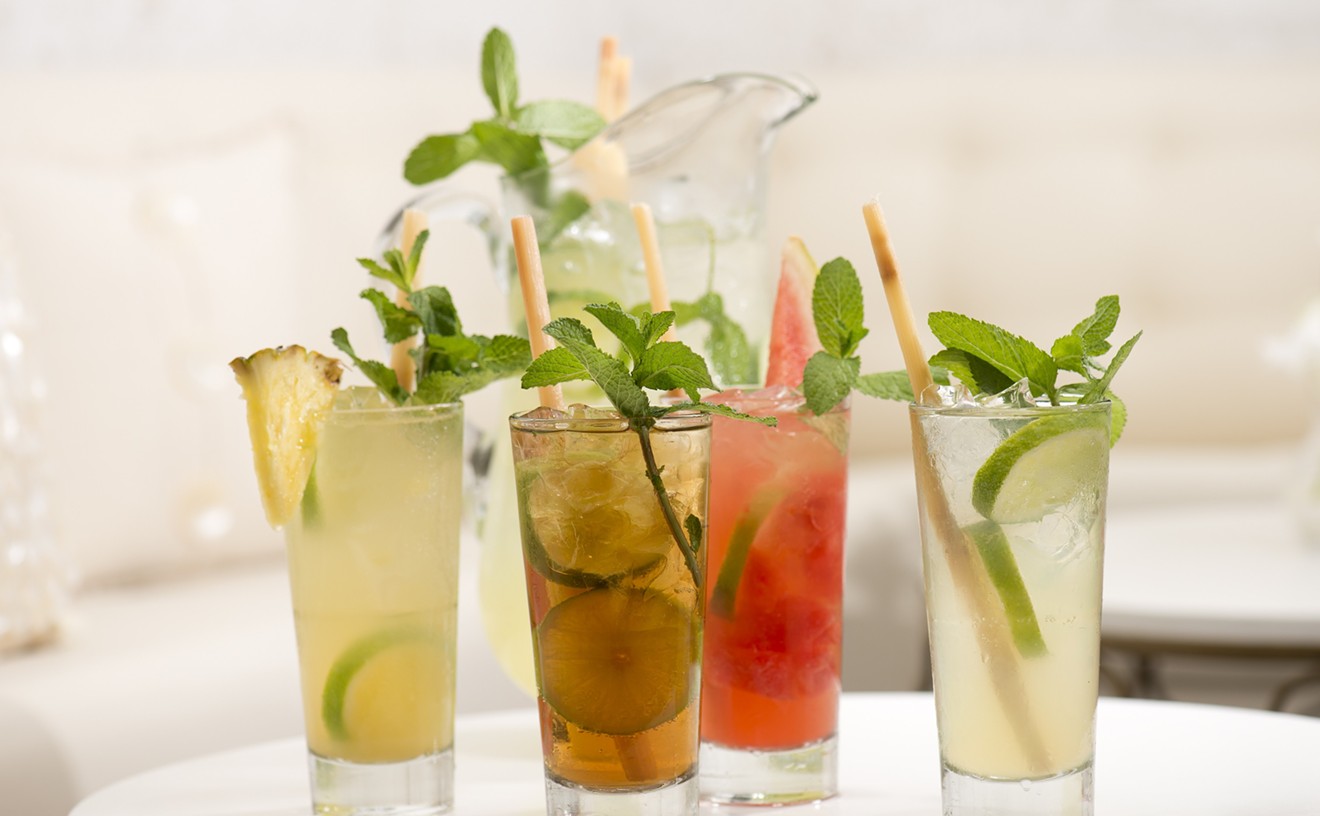
- 820 Ocean Dr., Miami Beach, 33139 Map
- 305-532-9577
- lariosonthebeach.com
Best Martini
Bar Centro
Question: What happens when a world-class chef adds his own twist to a classic cocktail? Answer: Bar Centro's Clean 'n Dirty martini ($16). Instead of using the olive-juice dregs poured into the usual dirty martini, this beauty is made with olive brine "air" — a delicate wisp of salty foam that tastes like a mermaid's kiss. The brine air is the genius of chef José Andrés, whose culinary influence at his neighboring restaurant, the Bazaar, extends to this bar. The cocktail, made with vodka (ask for gin for a more complex drink, or stick with vodka if you want that mermaid's kiss to linger), is topped with an olive spherification instead of an olive. Again, the chef is at work, gently encapsulating the essence of an olive into a delicate swirling dome of perfection that you can pop in your mouth. This drink is the ultimate marriage of classic flavors and modern technique. Hours are 6 p.m. to midnight Sunday through Wednesday and 6 p.m. to 1 a.m. Thursday through Saturday. Breakfast is served from 7 a.m. to 4 p.m. daily, and lunch is from 11 a.m. to 4 p.m. daily.
- 1701 Collins Ave., Miami Beach, 33139 Map
- 305-674-1701
- slshotels.com/southbeach/barcentro
Best Margarita
Rosa Mexicano
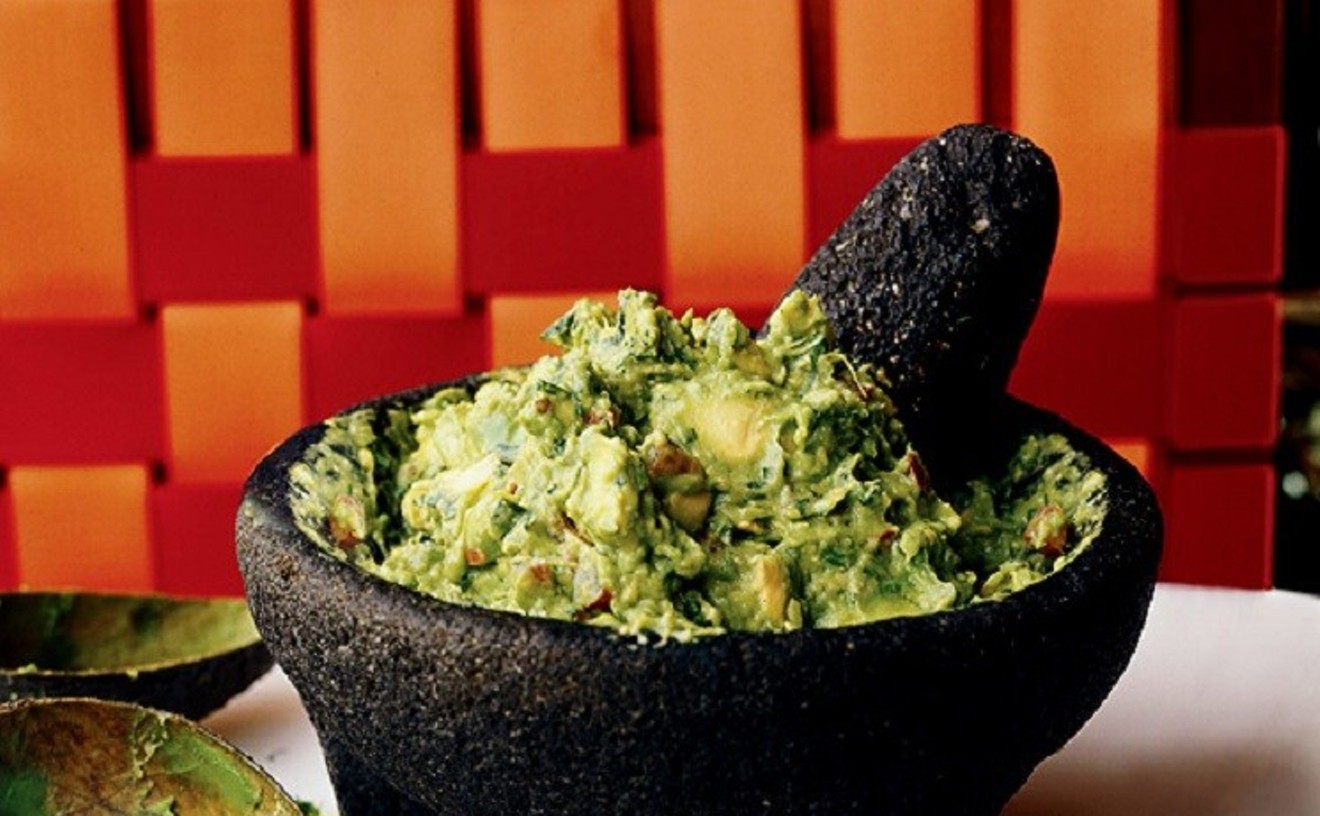
Rosa Mexicano's first Florida location opened in downtown Miami in 2007, but the restaurant's roots date back much further. In 1984 in Manhattan, the eatery opened the doors to its first location. The idea was to show New Yorkers that authentic Mexican didn't mean bean-and-beef burritos — and a proper margarita didn't have to be neon green and made from a mix. Three decades later, Rosa Mexicano boasts outposts from San Francisco to Washington, D.C. At the Brickell restaurant, a 15-foot water wall and Acapulco cliff-diver figurines welcome you. It's fitting, because after a few of the bar's many agave cocktails — there are 14 varieties, priced from $12.50 to $16 — you'll be brave enough to take such a plunge yourself. Flavors range from strawberry and grapefruit to spicy cucumber and mango chili, but the house specialty remains the frozen pomegranate margarita, also the bar's signature cocktail since the early '80s. Two giant slushy machines behind the bar mean your refill is ready in seconds. Each one is prepared with a simple blend of blanco tequila, house triple sec, lime juice, and a ruby-hued pomegranate concentrate. If you take yours with salt, you won't get the cheap stuff — your margarita will arrive with a rim of delicate shavings of flor de sal that melt on your tongue. And, at $12.50 apiece, they're downright addictive.
- 900 S. Miami Ave., Miami, 33130 Map
- 786-425-1001
- rosamexicano.com
Best Bar Food
Bar Meli 69
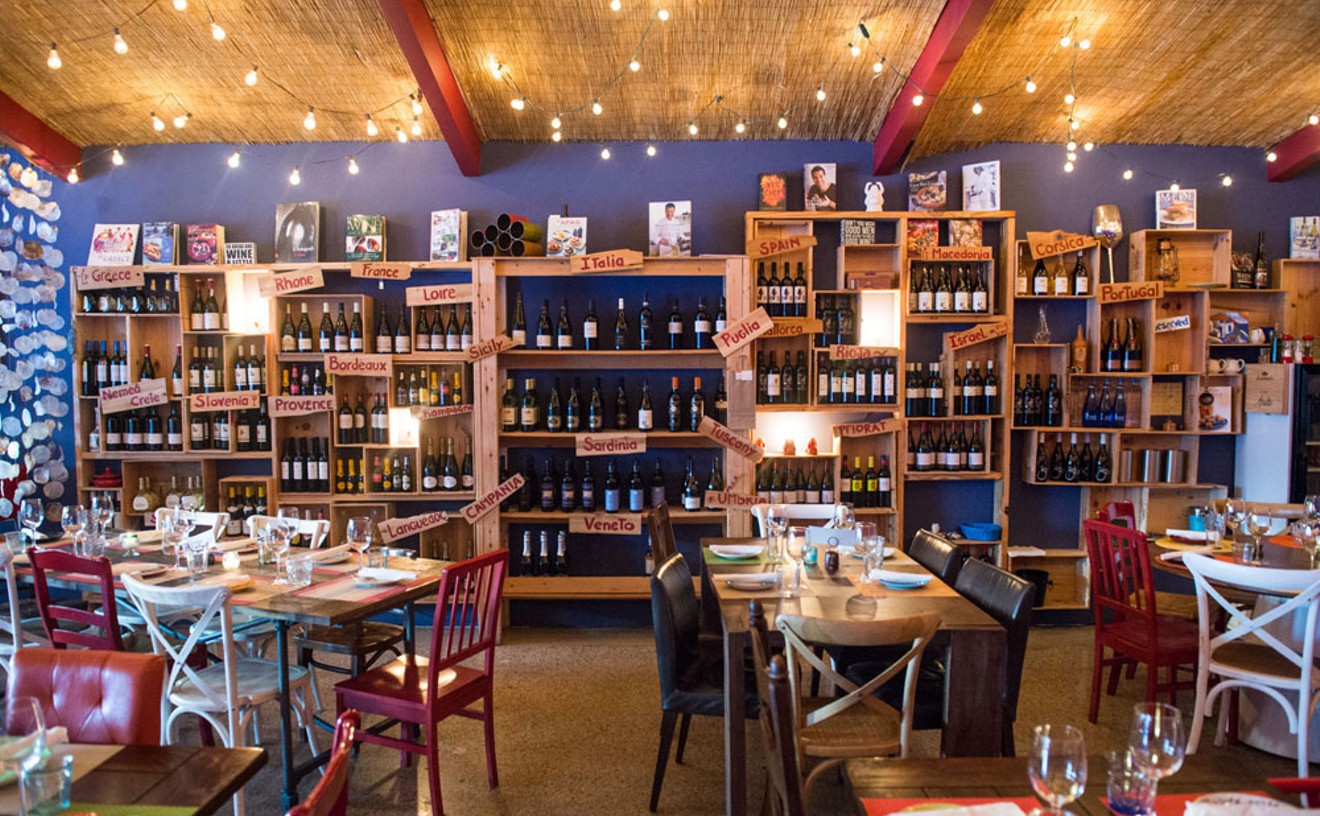
Walk into a bar anywhere in the United States, and the menu will likely list burgers, wings, and such. But did you ever wonder what kinds of bites a bar in, say, Greece or Southern Italy would serve? Bar Meli answers that nagging question: stuffed grape leaves ($4), warm pita with spicy feta spread ($6), and prosciutto-wrapped dates ($4). This MiMo District wine bar is the next best thing to booking a ticket to a waterfront European destination. Sidle up to the bar and order a wine from Israel or a beer from Greece while you're waiting for your food. If by chance your neighbor orders the saganaki ($14) — which arrives in flames to the delight and applause of the room — order one too before your FOMOC (fear of missing out on cheese) flares up. Hours are 5 to 11 p.m. Monday through Friday and 6 to 11 p.m. Saturday.
- 6927 Biscayne Blvd., Miami, 33138 Map
- 305-754-5558
- barmeli.com
Best Late-Night Dining
La Sandwicherie
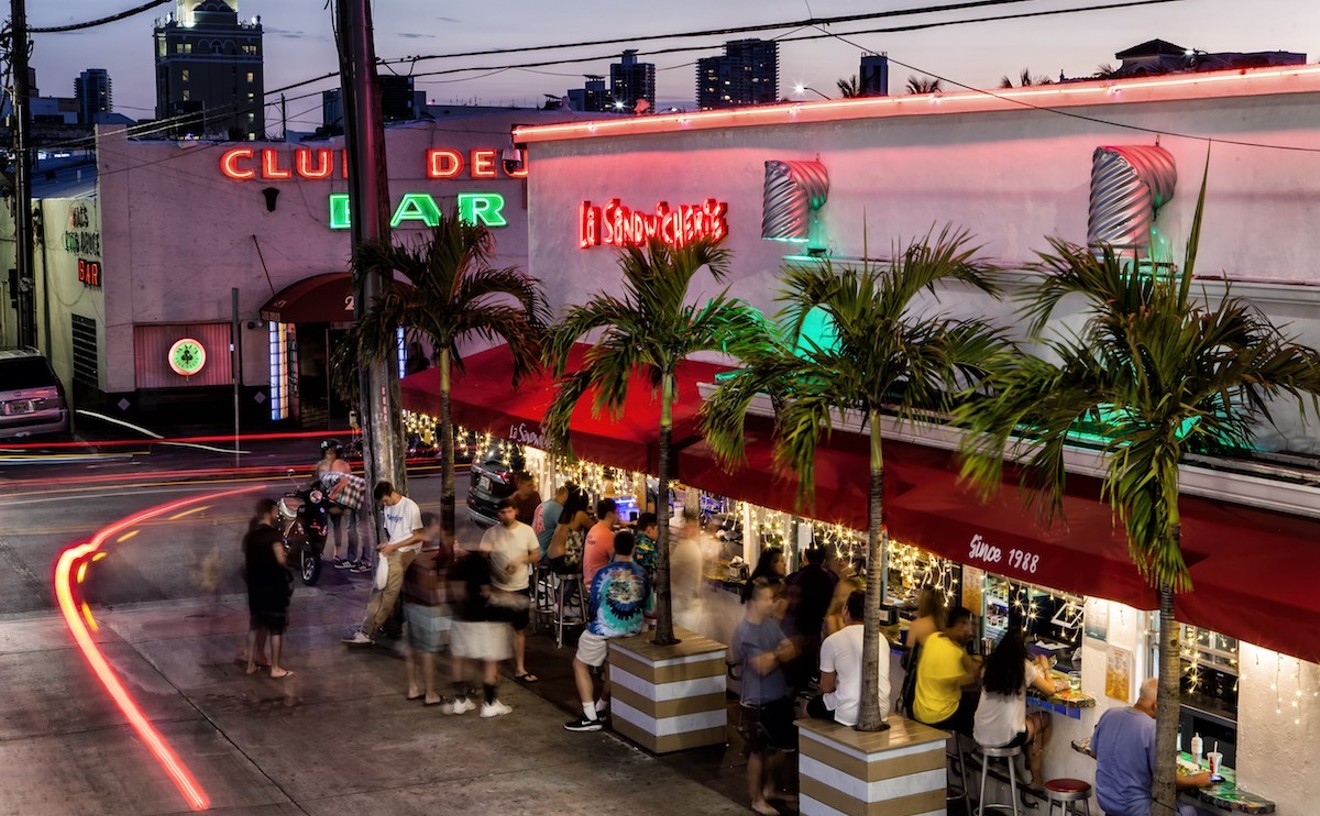
It's as time-honored a Miami tradition as they come: After stumbling out of the bar at an ungodly hour of the morning, you and your friends loudly debate where you'll go to sate your alcohol-soaked bellies. Fortunately for patrons of South Beach's storied Mac's Club Deuce, La Sandwicherie is right across the street. Since 1988, this gem has been serving French cuisine that's delicious any time of day; it just so happens it's particularly tasty after pounding a few. Open until 5 a.m., the eatery offers a wealth of delights, including the Alaskan sandwich ($9.70), a sumptuous but simple combination of smoked salmon and mozzarella. For customers who prefer their sandwiches hearty and meaty, there's the Terminator ($10.90), a ham, turkey, salami, and provolone combo perfect for late-night indulgence. For savvy drinkers who'd like to feel marginally less shitty in the morning, La Sandwicherie is kind enough to also provide smoothies, shakes, and veggie juices such as the Green Planet ($6.10), a refreshing blend of cucumber, celery, apple, and lime. Whether you're trying to eat as decadently as possible or ward off a hangover, La Sandwicherie truly has something for you.
- 229 14th St., Miami Beach, 33139 Map
- 305-532-8934
- lasandwicherie.com
Best Brazilian Restaurant
Ofa Restaurant

You should definitely start your meal at Ofa Restaurant with the pão de queijo ($7). A handful of these hot, doughy cheese balls arrives on a wooden board in a small brown bag beside a jar of requeijão, a creamy dairy spread that's sweet like cream cheese yet far more spreadable. It's a satisfyingly simple start to any traditional Brazilian meal, but even if tradition isn't your thing, you'll be happy here. The best part about Ofa is the ambiance. This isn't the been-there-done-that Brazilian steakhouse touting massive skewers of meat that bop from table to table. And it's not a nostalgic mom-and-pop that focuses on hearty, homestyle dishes served family-style. Instead, Ofa specializes in contemporary takes on South American dishes via progressive menu items, many of which are gluten-free and vegan. Try the farofa, a nutty-flavored, toasted, buttered cassava-flour dish. It's often served with meats, beans, and stews, but here it's a shareable bowl in a rainbow of flavors, from garlic to bacon to lemon-ginger to banana ($5). Or try bobo de vegetais, a dish that often contains shrimp in a purée of cassava meal with coconut milk but here is made vegetarian with peppers, mushrooms, tomatoes, onions, and plantains ($22). Brazilian sweets include brigadeiros — traditional chocolate truffles made with dark or milk chocolate and condensed milk. The drink menu, created by Brazilian bartender Jean Ponce, lists the usual caipirinhas, but try his riffs on South American classics such as the Abacaxi, a tropical libation that fuses fresh pineapple purée with artisanal white cachaça ($12).
- 1929 Purdy Ave., Miami Beach, 33139 Map
- 305-763-8766
- ofarestaurant.com
Best Argentine Restaurant
Fiorito
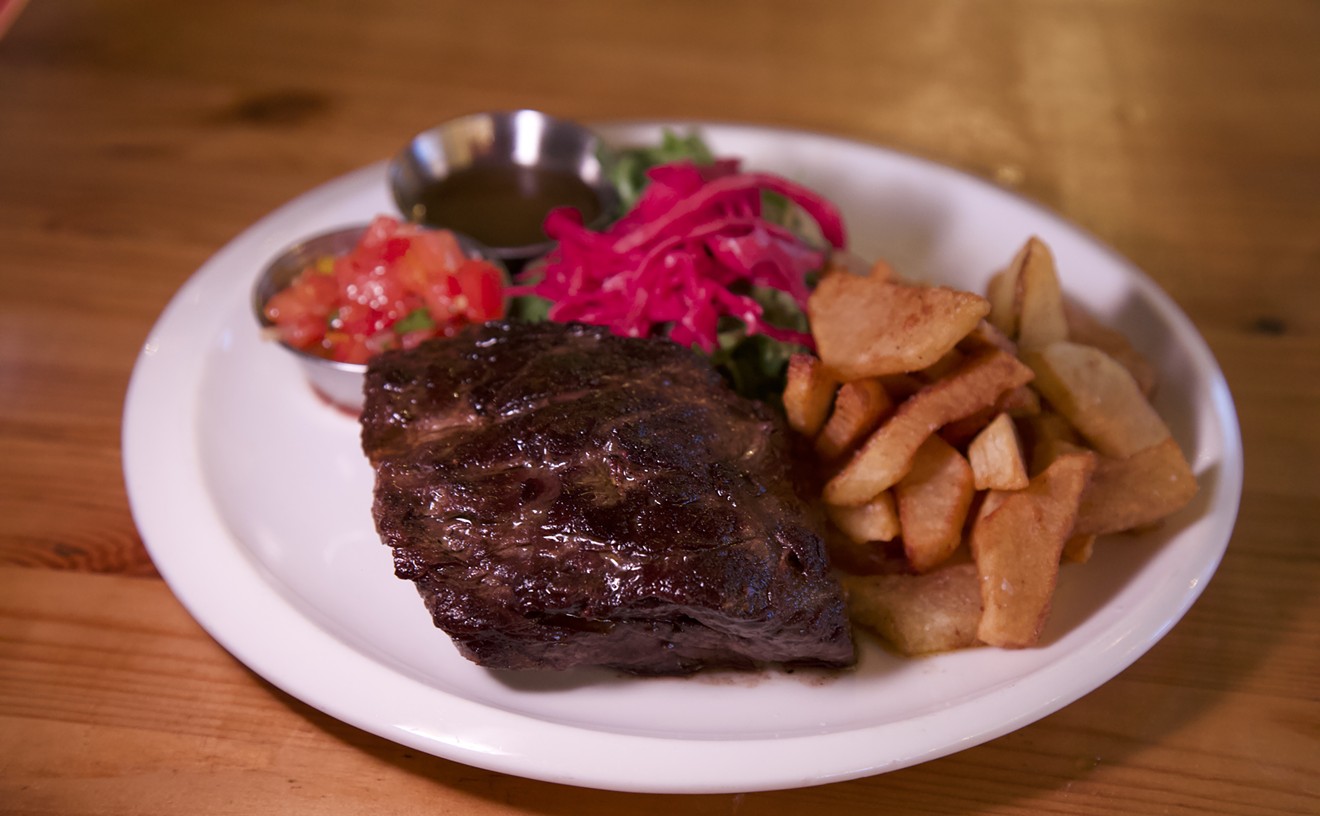
More than 30 years have passed since Diego Maradona's infamous "Hand of God" goal, which gave Argentina a 2-1 lead over the English in the 1986 World Cup quarterfinals. To this day, soccer fans remain incensed by the fact that the brash Argentine used his hand to drive a ball into the back of the net. And while the five-foot, five-inch footballer's mug graces the walls of this Little Haiti hideaway, the dishes brothers Maximiliano and Cristian Alvarez put out could make you forgive even the greatest sins. For their choripán, creamy roasted sweetbreads are veneered with a gorgeous smoky crust highlighted by a fragrant leek chimichurri ($9). The way they make a steak Milanesa ($11) so tender and juicy inside with such a shatteringly crisp crust defies all logic. It's akin to the referee's refusal to blow a whistle when Maradona hand-balled that goal home. Amazing.
- 5555 NE Second Ave., Miami, 33137 Map
- 305-754-2899
- fioritomiami.com
Best Nicaraguan Restaurant
Yambo Restaurant

If you have a hankering for gallo pinto or carne asada, there's no better spot than Yambo. It's open round-the-clock every day. Since 1983, late-night partiers, lunch-time munchers, and families out for a casual dinner have been lining up at this restaurant with an outdoor patio and indoor space to get their fill of Central American delicacies. Noted favorites are the savory gallo pinto, the sweet maduros, and the rich queso frito (fried cheese). Though prices are sometimes a little murky at this cash-only spot (but credit cards are OK for large orders), for less than $10 you will be blown away by the quality and quantity of food scooped into your Styrofoam container or onto your plate. Take the time to absorb the only-in-Managua decor, the coin-operated pony ride, and the impressive monument to Rubén Darío, the great Nicaraguan poet. Be sure to ask for the complementary homemade salsa and ensalada de repollo (shredded cabbage salad) to accompany your meal.
- 1643 SW First St., Miami, 33135 Map
- 305-649-0203
- www.facebook.com/yamborestaurant
Best Peruvian Restaurant
Sabor a Perú
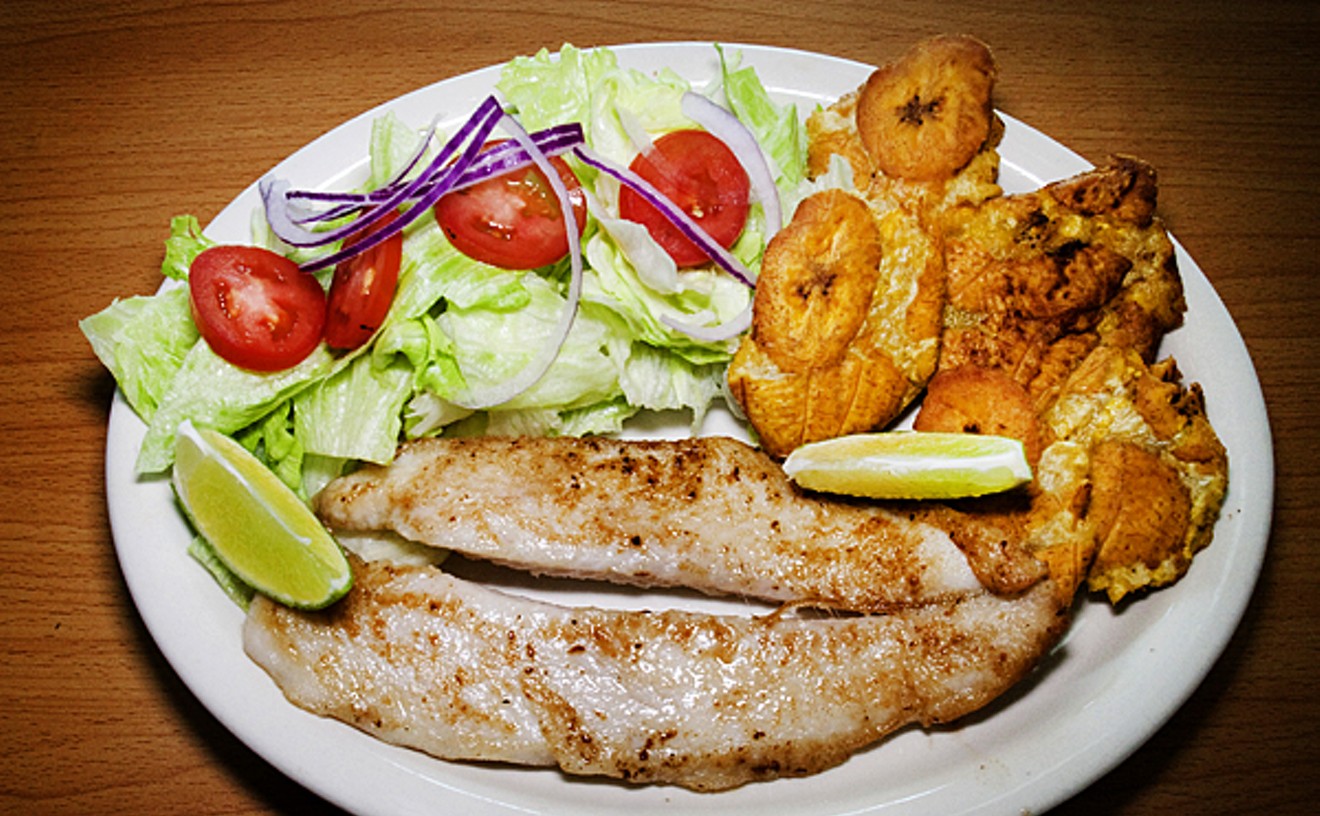
Many critics say one of the Miami culinary ecosystem's shortfalls is its lack of diners. Objection! What is a diner? It's a neighborhood place with humble decor, friendly service, and food to fit any appetite or taste — all at reasonable prices. The Cuban cafeterias sprawled across Miami-Dade fit the bill well. Even better is the long-standing Peruvian seafood joint Sabor a Perú. It regularly draws such large crowds that hungry hopefuls happily wait outside and choke on traffic fumes. They do it for the jalea ($15.99), a neck-high mound of seafood that includes shrimp, squid, and whatever fresh fish is on hand. Speaking of fish, the mountainous ceviches are enough to feed a family of four, and whether it's the mixed seafood ($15.99) or the shrimp ($14.99), it's punchy and tangy enough to cool you on even the hottest August day.
- 2923 Biscayne Blvd., Miami, 33137 Map
- 305-573-9637
Best Cuban Restaurant
Puerto Sagua

It's hard for a Cuban restaurant to stand out in a town with more Cuban restaurants than any city off the island. This cuisine should be simple, unpretentious, and delicious. You should be able to taste the garlic before your meal even hits the table, and nothing should be served without a slice of lime on the plate. Puerto Sagua checks those boxes, but that's not what makes it stand out. It's the kind of place you'd expect to find in Little Havana or Hialeah, but this no-frills joint is on the corner of Seventh Street and Collins Avenue in South Beach, where glitz and glamour reign supreme — and most of the old school has been bought up and buried under the new. From 7 a.m. till 2 p.m. seven days a week, Puerto Sagua serves Cuban standards such as masitas de puerco con arroz moros y yuca ($15.25) and ropa vieja con maduros ($11.95) that are as good as you'll find anywhere — including your abuela's dinner table.
- 700 Collins Ave., Miami Beach, 33139 Map
- 305-673-1115





